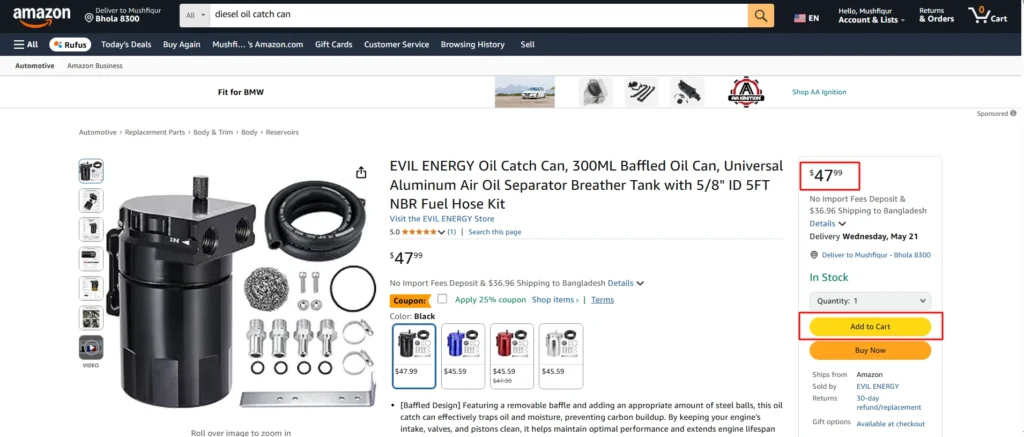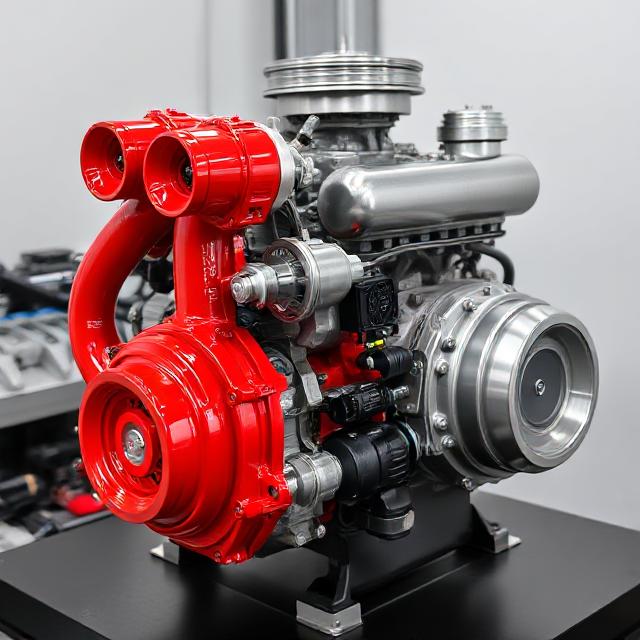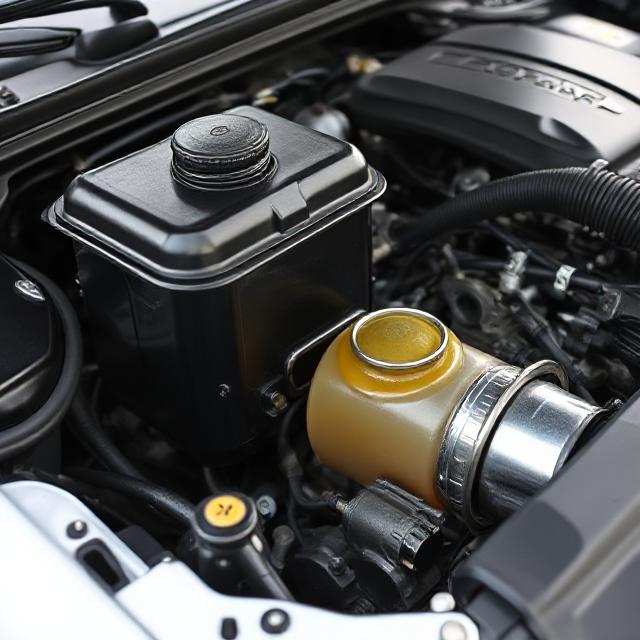An oil catch can is a small device fitted to your car’s engine to entrap oil and water from the air before it reaches the intake system. This helps keep the engine clean, improves performance, and extends its life. It’s a smart upgrade for anyone who wants better fuel efficiency and less engine buildup over time.
Why would you want a catch can?
A catch can is a great car accessory because it helps keep your engine clean and running smoothly. Over time, oil and water can build up in the input system, which may lead to carbon deposits, reduced performance, and even engine damage.
Upgrading your 5.7 Hemi Headers with high-performance headers and installing an oil catch can enhances exhaust flow and prevents oil vapors from contaminating the intake system, leading to improved horsepower and engine longevity.
A catch can trap these unwanted particles before they reach the engine. This means fewer repairs, better fuel economy, and longer engine life. It’s beneficial if you drive a turbocharged or high-performance vehicle. Installing a catch can is a smart way to protect your engine and get the most out of your car.
How do catch cans work?
A catch can works by blocking oil, water, and other harmful particles before they can enter your car’s intake system. When your engine runs, pressure builds up and releases oily vapors through a system called the PCV (Positive Crankcase Ventilation).
Normally, these vapors return to the engine and can cause carbon buildup. A catch can is installed in this line to catch the dirty vapors. It separates the oil and water from the air, allowing only clean air to return to the engine. This helps your engine stay cleaner, run better, and last longer.
Buy an Oil Catch Can on Amazon

- Go to Amazon
- Search for “Oil Catch Can”
- Use filters like “Customer Review”, “Price Range”, or “Brand” to narrow down your options.
- Look for popular and highly-rated brands like Ruien, Mishimoto, or ESPEEDER.
- Check Product Details
- Scroll down to “Customer Reviews”.
- Read both positive and negative feedback to make a smart choice.
- Once satisfied, click the “Add to Cart” button.
Oil Catch Can for a Turbo Diesel Engine

Turbo diesel engines generate blow-by gas mixtures of oil, fuel, and combustion byproducts, which can foul intake components over time. An oil catch can is an inexpensive upgrade that captures these vapors before they re-enter your intake system, helping your engine run cleaner and more efficiently.
What Is an Oil Catch Can?
An oil catch can is a small reservoir installed between your engine’s crankcase ventilation outlet and the intake manifold. Rather than routing blow-by gases straight back into the intake tract, the catch can diverts them into its chamber, where oil droplets and sludge accumulate. Cleaner vapors then flow onward, reducing carbon build-up.
How It Works
- Vent Connection: A hose connects the crankcase ventilation port to the catch can inlet.
- Filtration & Separation: Inside the can, baffles or filter elements force oil droplets to collide and coalesce on the walls.
- Clean Outlet: Purified gases exit the catch can through the outlet hose, rejoining the engine’s intake without large oil particles.
- Drain Port: A threaded drain at the bottom lets you remove collected oil and sludge during routine maintenance.
Installation Overview
- Choose the Right Kit: Look for a unit rated for turbo diesel flow rates (often 50–100 CFM).
- Locate Mounting Point: Secure the catch can in the engine bay, away from extreme heat and moving parts.
- Route Hoses: Connect the inlet hose to the crankcase vent and the outlet hose to the intake manifold. Keep hoses as short and straight as possible.
- Seal & Secure: Use quality clamps and ensure all fittings are airtight to maintain proper crankcase pressure.
Maintenance Tips
- Check Monthly: Inspect the catch can’s contents every 1,000–2,000 km.
- Drain & Clean: Open the drain plug and wipe the interior with a clean cloth. Use a mild degreaser if sludge buildup is heavy.
- Replace Filters (If Applicable): Some models have internal filter elements—change them per the manufacturer’s recommendations.
- Inspect Hoses & Clamps: Look for cracks or oil leaks and tighten clamps as needed.
Oil Catch Can Diesel Benefits
If you drive a diesel vehicle, you might have heard about an oil catch can. But what is it, and why should you care? In simple words, an oil catch can is a small device that helps keep your engine clean and running smoothly. It’s installed in the engine’s ventilation system and works by catching oil mist, carbon, and moisture before they can build up inside the engine.
Over time, diesel engines naturally produce more blow-by gases — these are gases that escape past the piston rings during combustion. These gases carry tiny oil droplets and carbon particles that can clog up your intake system. That’s where the oil catch can comes in.
Top Benefits of an Oil Catch Can in Diesel Engines
- Reduces Carbon Build-Up
Oil catch cans stop dirty oil vapors from entering the intake. This helps reduce sticky carbon deposits on intake valves and the EGR (Exhaust Gas Recirculation) system. - Improves Engine Performance
A cleaner intake means better airflow, which leads to smoother engine operation and better fuel combustion. - Extends Engine Life
Less carbon and sludge build-up means less wear and tear on important engine parts. That means your diesel engine stays healthier for longer. - Better Fuel Efficiency
With a clean engine, your diesel vehicle burns fuel more efficiently. Over time, this can lead to improved mileage and fuel savings. - Protects the Turbocharger & Intercooler
In turbo diesel engines, catch cans help keep the turbo and intercooler free from oil deposits, which improves reliability and performance. - Reduces Oil Contamination
Keeps the engine oil cleaner by stopping harmful vapors from cycling back into the oil system. - Lower Emissions
By preventing oil vapors from being burned in the engine, an oil catch can can help reduce smoke and harmful emissions.
Prevent a catch can
An oil catch can is a great upgrade for your diesel engine, but like any part of your vehicle, it needs regular care to keep working properly. If it’s ignored, it can become clogged or stop working, which means your engine could start collecting the same oil mist and carbon that the catch can is supposed to stop.
Why Maintenance is Important
Oil catch cans collect dirty vapors, oil sludge, and carbon from your engine’s blow-by gases. Over time, this builds up inside the can. If it’s not cleaned, the catch can may:
- Get full and overflow
- Get clogged and restrict airflow
- Lose its ability to separate oil from air
- Causes pressure issues inside the engine
To avoid these problems, follow a few simple steps regularly.
Oil Catch Can Maintenance Guide
| Tip | Description |
| Check the Catch Can Often | Inspect the can every 1,000–2,000 km (or once a month). Diesel engines may fill it faster than petrol. |
| Empty It Regularly | Drain the oil and moisture buildup to prevent overflow and blockage. Use the drain plug or remove the can. |
| Clean the Filter/Screen | Some catch cans have internal filters. Rinse or replace them if they look dirty or clogged. |
| Seal All Connections | Make sure all hoses and clamps are tight and secure. Loose connections can cause leaks or reduce performance. |
| Use Quality Hoses | Cheap hoses can crack or collapse. Use heat-resistant, oil-safe hoses made for automotive use. |
| Avoid Overfilling | Never let the can get too full. A full catch can won’t work properly and can cause damage. |
| Check in Cold Weather | Moisture can freeze in winter. Make sure the can isn’t clogged with ice or thick sludge. |
| Install It Properly | Mount the catch can in an upright position for best drainage and airflow. |
Oil Catch Can 5.7 Hemi: Why It’s a Must-Have Upgrade
If you own a vehicle with the powerful 5.7 HEMI engine, like a Dodge Charger, Challenger, Ram 1500, or Chrysler 300, you already know how strong and reliable it is. But did you know that installing an oil catch can help keep your HEM I engine running smoother, cleaner, and longer?
In simple terms, an oil catch can is a small device that catches oil mist and blow-by gases before they re-enter your engine’s intake system. Without a catch can, that oily vapor gets burned again, causing carbon build-up that can hurt your engine’s performance over time.
Conclusion
Yes — if you’re serious about keeping your engine clean, efficient, and long-lasting, then an oil catch can is 100% worth it. This small, affordable upgrade plays a big role in protecting your engine from carbon build-up, sludge, and performance loss caused by blow-by gases.
Whether you drive a high-performance sports car, a diesel truck, or a daily driver, an oil catch can helps maintain cleaner air in your intake system, which means smoother performance and better fuel economy.
FAQs About Oil Catch Cans
1. What is an oil catch can?
2. Why do I need an oil catch can?
3. Do oil catch cans work?
4. Is an oil catch can good for diesel engines?
5. How often should I empty or clean the catch can?
6. Does an oil catch can improve performance?
7. Is an oil catch can legal?
8. Can I install an oil catch can myself?
9. Do I need an oil catch can on a stock engine?
10. Which engines benefit the most from a catch can?
Direct-injection engines
High-mileage vehicles
Performance and diesel engines
These engine types tend to produce more blow-by, making them great candidates for a catch can.






